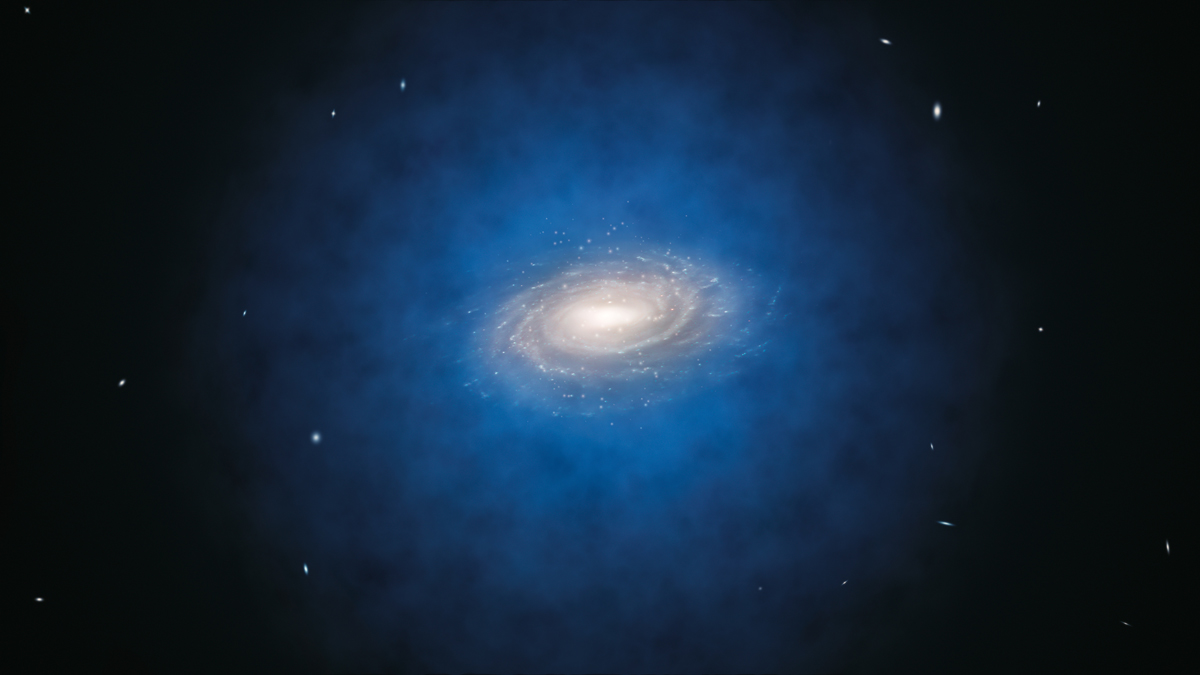Astronomers have found what they claim is fresh evidence that Earth and our Milky Way galaxy are suspended inside a gigantic void that’s skewing our observations of the cosmos.
The radical proposal, made by analyzing echoes of the Big Bang, suggests that our galaxy may be floating in a 2 billion-light-year region that’s 20% less dense than average.
If the results hold up, they could help astronomers find the true age of our universe and offer a solution to one of the stickiest conundrums in cosmology — the discrepancy, known as the Hubble tension, that the distant universe expanded more slowly in the past than the nearby universe does today.
The findings would also prompt a major rewrite of existing cosmological models. The researchers shared their findings July 9 at the Royal Astronomical Society’s National Astronomy Meeting in Durham, England.
Hubble trouble
Over the past decade, cosmology has been embroiled in a growing crisis as observations — first made by the Hubble Space Telescope and later by the James Webb Space Telescope — suggested that the universe is expanding at different rates depending on where astronomers look.
Currently, there are two gold-standard methods for figuring out this expansion rate, called the Hubble constant. The first involves poring over tiny fluctuations in the cosmic microwave background, an ancient relic of the universe’s first light produced just 380,000 years after the Big Bang. This method enabled astronomers to infer an expansion rate of roughly 67 kilometers per second per megaparsec (km/s/Mpc), which closely matches predictions made by the standard model of cosmology.
Related: ‘Our model of cosmology might be broken’: New study reveals the universe is expanding too fast for physics to explain
But the second method — measuring closer distances with pulsating stars called Cepheid variables — returned a puzzlingly high value for the Hubble constant of 73.2 km/s/Mpc.
This discrepancy may not seem like much, but it’s enough to completely contradict the predictions made by the standard model of cosmology. Astronomers have suggested many major and minor rewrites to this model to explain the tension, including tossing out dark energy and dark matter altogether.
But this anomaly could be specific to our cosmic backyard, the astronomers behind the new research suggest.
“A potential solution to this inconsistency is that our Galaxy is close to the centre of a large, local void,” lead author Indranil Banik, an astronomer at the University of Portsmouth in the U.K., said in a statement. “It would cause matter to be pulled by gravity towards the higher density exterior of the void, leading to the void becoming emptier with time.”
That would make local expansion inside the void faster than it is in denser, more distant regions of the cosmos, he added.
Filling the void
The notion that our part of the universe could be less dense than others first took shape in the 1990s, when researchers found fewer galaxies in our local universe than they expected compared with the surrounding universe.
Further research backed up these observations, indicating that our galaxy may be in the center of a region known as the local hole or KBC void, named after the initials of the study’s astronomers. Nonetheless, some astronomers question whether the apparently underdense space could be filled with objects that don’t emit light.
To investigate the evidence further, Banik and his colleagues collected 20 years’ of data from observations of nearby baryon acoustic oscillations (BAOs) — pressure waves created during the Big Bang that froze in place and expanded alongside the universe, governing the distribution of galaxies we see today.
“These sound waves traveled for only a short while before becoming frozen in place once the universe cooled enough for neutral atoms to form,” Banik explained. “They act as a standard ruler, whose angular size we can use to chart the cosmic expansion history.”
According to the researchers’ BAO measurements, it’s 100 times more likely that we live in a cosmic void than a region of average density.
The next step for Banik and colleagues will be to compare their void model to other models to see which best fits the history of the universe’s expansion. They will also need to explore tweaks to the standard model of cosmology, including throwing out the assumption that matter is evenly distributed throughout the universe.
The implications would be vast — not just for our understanding of how the universe behaves but for our own place in it. Modern astronomy has consistently revealed that our personal view of the cosmos is unexceptional. However, if we do live in the middle of a void, we could be more unique in our isolation than first thought.
